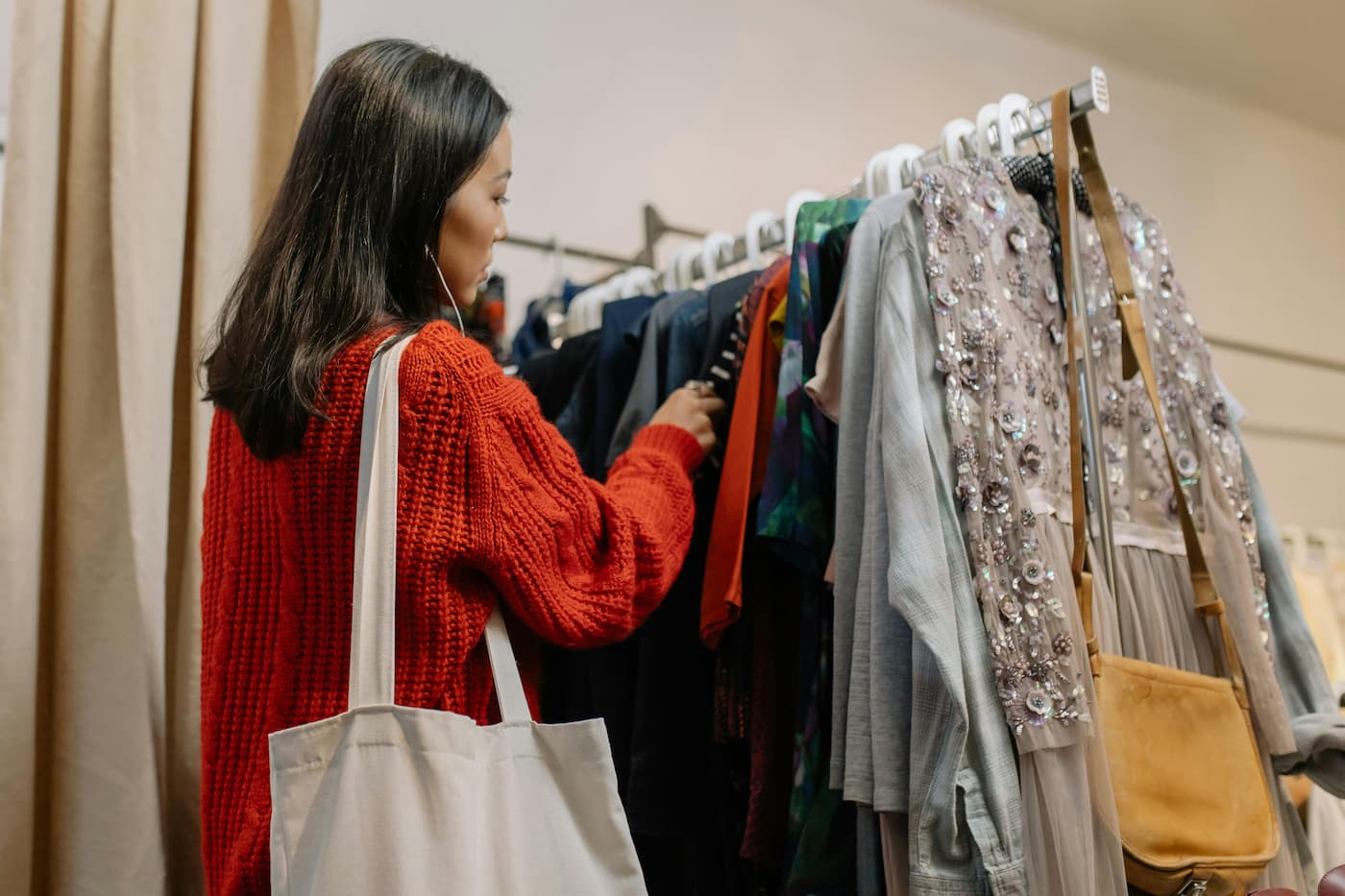
- High Country Conservation
- August 12, 2024
- Ask Eartha
Dear Eartha, I need to buy some new clothes, but I have heard that a lot of clothing is made poorly and ends up in the landfill when we are done wearing them, even if donated. How can I avoid contributing to the problem?
Clothing is such a complex topic. We all need new things from time to time, but there’s a big difference between need and want. And I get it! It’s hard for me to resist a cute St. Patrick’s Day T-shirt that is simply perfect for the upcoming day of celebration. Most people only wear about 20% of the clothing they own and that other 80% adds up to some serious closet space. Before hitting the stores, focus on what clothing you really need (not want) to replace.
Fast Fashion vs High Quality
You may have heard of the term “Fast Fashion” before, but for those who haven’t, it is an approach to the design, creation, and marketing of clothing fashions that emphasizes making fashion trends quickly and cheaply available to consumers. These clothes are made from poor quality materials and wear out quickly (ahem, St. Patrick’s Day T-shirt). People are drawn to fast fashion because it is easy to find, and the low price tag allows people to buy new clothes whenever they want, not just when they need something new.
Keep in mind that high quality materials like wool, cotton, hemp, and linen not only last longer, they also wash better and hold their shape. The craftmanship that goes into these clothes takes more time and is of a higher level (some are even handmade) and that increases the cost. Quality fabrics also don’t wear out as quickly as fast fashion. There’s a reason your grandma’s bell bottom jeans look the same as they did in the seventies and can easily be added to your new wardrobe.
Over Consumption
We are also buying four times more clothing than we did in 2000. Why? Because producers of fast fashion are cranking out more than 100 billon pieces of clothing every year. And not everything gets purchased. If you think about the global population of 8 billion people, that would mean each person would need to buy 12-14 pieces of clothing each year. There is no way that is happening.
With all these items being sold at ridiculously low prices, it’s hard to resist buying yourself something new every day. It doesn’t help that ads on TV and social media suggest the latest and greatest clothing item on a loop. It really is the power of suggestion driving our buying habits.
Environmental Impact
All those cheaply made clothes ultimately end up getting trashed. In fact, 92 million tons of clothes are dumped in landfills each year. This is equivalent to one full trash truck dumping a load of clothes at the landfill EVERY SECOND. Wow! Fast fashion also uses massive amounts of water and energy, draining our non-renewable resources. Making one pair of jeans requires 713 gallons of water – enough for one person to drink for 900 days!
Saving Money?
When you’re on a budget (and let’s face it, who isn’t), buying a new shirt for $10 sounds much better than buying one for $70. But when that $10 shirt quickly shrinks in the dryer and falls apart at the seams, you’ll find yourself buying another shirt. And another. And another. And before you know it, you might as well have purchased the $70 high quality shirt that lasts years instead of months or weeks. For some perspective, the average American family spends $1,700 on clothes annually. Sadly, most of that is wasted on poor quality clothing.
Sustainable Brands
So, how do you avoid the fast fashion trap? Look for companies that are local, American made, or those striving to lessen their environmental impact. There’s a reason that companies like Patagonia, Toad & Co, and Cotopaxi are so popular. They make high quality products that are made to last. And new companies are popping up all the time.
The initial cost of items from these sustainable brands is higher than those fast fashion alternatives, but look at them as an investment in something you’ll be able to wear for years to come. And you can feel good knowing that you are reducing your impact on the environment.
Ask Eartha Steward is written by the staff at the High Country Conservation Center, a nonprofit dedicated to waste reduction and resource conservation. Submit questions to Eartha at info@highcountryconservation.org.
